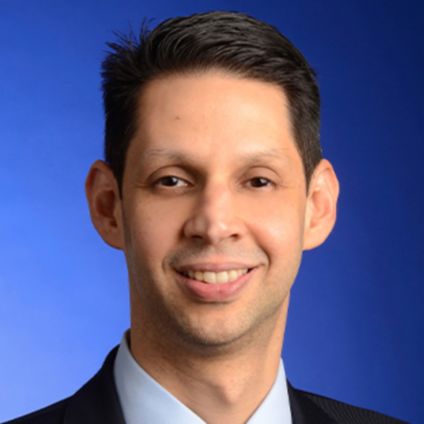To centralize or not to centralize?
Recently, Jay Ayrton, Tax Reimagined Lead in Europe, Middle East & Africa, KPMG in the UK, and Susie Cooke, Global Tax Transformation Leader, Global Tax & Legal, KPMG International, came together to discuss how tax functions are using technology and data management to centralize tax processes and develop operating models fit for the future.
Here what they had to say below:
Jay, can you help set the stage by walking us through some of the tax processes you're seeing organizations centralize?
Jay: We are seeing a number of companies looking at centralization across a range of tax and accounting processes and related controls management. Some of these are indirect tax, which started many years ago and led the way from a tax perspective, followed by tax reporting, transfer pricing documentation and operational transfer pricing. Most recently, we are seeing organizations centralize their statutory accounts and corporate tax returns, typically the lower complexity ones.
And Susie, for those that plan to embark on a centralization journey or are in the midst of it now, what are some of the risks and opportunities they may face?
Susie: In order to realize the value of any change or transformation, it’s really important to identify the risks and make sure you know how to manage them. When thinking about the potential risks, they can come from a variety of different areas, including, talent, the business itself, and a potential lack of flexibility.
If we talk about talent, both talent attraction and retention can be problematic in any business these days, but centralization can further emphasize this issue and potentially also increase the attrition of those talented resources as well.
When a tax function is centralized, it often means that the manual, repetitive, transactional and downright boring elements are done through one shared service center or center of excellence. The talent in these centers are still accountants, are still consultants, and are still highly qualified and experienced professionals. But when located in a shared service center or center of excellence, they may be given all of the manual work. As such, they can, in some instances, experience lower job satisfaction due to the perception that the activities they perform are less valuable and there may be limited opportunities for growth.
One of the key opportunities is that you’re really able to leverage the scale that’s afforded to you by having all your tax skills, experience and processes in one place. You can have the systems, tools, methodologies, technologies and processes all at the tip of your fingers to help improve the quality and potentially mitigate some of risks, because you don’t have a range of different processes and different systems your teams are trying to work with. You can be consistent, standardized and automated across the board.
What are you seeing as the key enablers for sourcing and centralization?
Jay: I'm sure there'll be more, but the three enablers I feel are critical to this decision making are as follows.
Firstly, the enterprise resource planning (ERP) landscape. Does a company have a single or a few numbers of ERPs which get more effectively leveraged from a technology standpoint to look to automate its processes? That's not to say a company with a number of ERPs can't look at centralization, but it does limit its kind of technology automation capabilities, particularly when it's looking at multi-jurisdictional standardization.
Secondly, the wider finance transformation program happening in a company is really important, and, in my experience, has resulted in companies looking at a greater level of centralization to align their finance and tax functions. This also allows companies to facilitate how compliance is managed, not just how compliance is undertaken. For example, a multinational company I work with has not only centralized their statutory accounting and tax return work but has also managed their controllership reviews through their regional teams based in the same location where the compliance work is done.
The third point I'd bring out is the ability to leverage a third-party provider's capability, and the other key is scale. KPMG has invested in our own centralized capability. What this can allow companies to do is leverage the investment made in technology and infrastructure, particularly where the first two enablers being fewer ERPs and a finance transformation program are in play.
And, at the same time, we are seeing, when we look at tax and tax compliance in particular, companies are getting more savvy about the skills needed to deliver and manage this. It's not just about tax technical skills. It is about process, organization, and data management skills. More companies are setting up tax operations teams which operate globally to set the standards for this.
All of these learnings are really driving us to think about compliance, centralization, and tax centralization in a different way than the way we looked at it maybe three or four years ago.
Are there alternative operating models? And how does an organization determine the optimal model for their business?
Susie:
When designing your operating model, you need to look across all components to design your true desired future state, including your functional processes, your people, your service delivery model, your technology, your performance insights and data, and your governance model. All those key elements need to be considered whether you’re decentralizing or whether you’re centralizing.
If you get your processes right and your people have the right skillsets, many of the other components can be much simpler to determine and design. As an example, where those people are located (i.e., the sourcing question) becomes less of an issue because everybody (no matter where they are) is following the same process, which can help mitigate a significant risk that arises when you have multiple different processes being applied.
When considering your tax operating model core components, and your desired future state, there is no one-size-fits-all approach. Every company is different. The number of companies and organizations that exist in the world is approximately the same as the number of different ways that people can twist and jive and design their own operating model and their own centralization strategy.
When talking about how to think that through, you should bring the whole business along for the ride. As one element of this journey, when you look at centralization versus decentralization, there are a few key things that you really need to think about.
First is stakeholder alignment. Do you know who your stakeholders are and where they are, as it is going to be a key consideration for how the tax operating model is designed. Also, how is tax aligned with its stakeholders (or you could call them customers)? How is your organization set up? How are the metrics aligned? These questions, along with many similar ones, can help lead you to your alignment strategy. Tax could be aligned by business unit, by legal entity, by functional team (such as legal or finance) or by any other type of stakeholder/customer. In an alternative view, it could be that tax would be better aligned by process or activity done within tax — i.e., splitting between compliance versus reporting. Or is it that a geographical alignment would be a better fit for your organization aligning people by the different regions around the world? There are of course multiple different versions of these splits and also hybrid models combining two or three alignments. While this may not seem like a big question, and the answer may seem obvious, really thinking through the alignment is critical because it can impact the types of skillsets you want in the different teams, and where you need those teams located.
We’ve talked a lot about centralization, but there’s also decentralization, where accountability and resources are within business units or legal entities. There are also various hybrids of these two extremes, such as co-location, where essential service team performs transactional tasks. However, local teams do more complex activities or use a center of excellence model, which incorporates a business partner or shared center into the mix.
There are many different ways of decentralizing. It doesn’t have to be one end of the spectrum or the other. And then you get the question around sourcing options. Again, there is a wide variety of options — all in-house, co-sourced (where your in-house and outsourced teams work together to get things done), or fully outsourced to third parties.
How does the centralization of an organization’s tax process align with the globalization of the regulators or tax authorities?
Susie: More and more we’re seeing regulators and tax authorities globalize. What we mean by this is an increase in the sharing of information between jurisdictions. Recent examples include the implementation of base erosion and profit sharing (BEPS), both Pillars One and Two, and country-by-country (CbC) reporting. All of the additional reporting required for all of these requirements (and there will likely be more to come), further emphasizes the need for an organization’s head office, wherever that is, to have oversight over tax. We're seeing CFOs and CEOs increasingly ask questions about tax, wanting to understand the data and have (near) real-time tax reporting for every location around the world. This is becoming more and more obvious in each of the clients I talk to. Tax used to fly under the radar because no one really understood it. Now, it's being brought to the C-suite and the board of directors on a frequent basis.
Jay: The one point I would interject with is the differentiation between technology and data management. I find those words are often used interchangeably and incorrectly.
I think some of the most successful companies are the ones who are developing a clear data management strategy, and a separate strategy to think about the technology solutions they want to use, not just for data management, but for everything.
I do think this is a critical point which only more recently have companies got to proper grips with.
Diving deeper into data management, how can tax teams leverage their organization’s data to respond and be ready?
Susie: Get involved in discussions with your finance and IT teams to really understand the data that's there and start to discuss and define not only what is needed but also what is possible. Then, ensure that you have a really good extract, transform and load (ETL) system and toolset that can help you pull the data together in the right ways. There is a lot of information and data available in the systems that exist today (and even more are expected to be available in the future). You just need to have a way of pulling it all together and the creativity to use it to help deliver value.
What expectations do regulators have with respect to data?
Susie: Globally, regulators and tax authorities are moving more and more to real-time reporting and more global oversight. We see more and more e-invoicing requirements, e-reporting requirements, and country-by-country reporting. There is also a drive from regulators to have more and more direct access to an organization’s data.
If we really want to look to the future, at some point the tax authorities will likely tell us what our tax liability is. They will likely use our data and tell us the answer. I don’t believe there isn’t an individual, company or organization that wants the regulators to be more advanced in the technology and data arena than they are. In order to get ahead of this, we need to be designing systems and our data and ensuring it tells the right answer and not the answer that most data, as it is currently designed tells, which would show the regulators and tax authorities something very different.
Jay: I would add that sometimes we think about real-time reporting as the purview of the bigger economies. As I continue to have more discussions with more companies and more regulators, we are seeing this emerging very quickly across a range of countries.
This has been a fascinating discussion. To conclude what advice would you like to leave our listeners with today?
Susie: What I would like to leave our readers with is that keeping with the status quo without having a vision is unlikely to work going forward. Just adding more people here, there, and everywhere shouldn’t be an option in today’s markets, if nothing else. I would encourage people to think about a true holistic vision for what they want their tax operating model to look like — not just whether it’s centralized or decentralized, but whether it’s in-sourced, outsourced, co-sourced and what the functional processes, technology and data management look like.
Because, if you’ve got an idea and you’ve got a vision, at least you can have a way of responding as the world changes around you.
Jay: I’d probably finish off by saying it’s important to get the balance right between taking a structured approach, developing a robust business case, and getting started! The practical challenge of sometimes getting some of these bigger transformations started is difficult. Everyone’s working through this, so you’re not alone.
Listen to the audio version of this interview below:
Related content
Connect with us

Subscribe to Future of Tax
Future of Tax updates straight to your inbox.

Follow us on LinkedIn
View daily content on our LinkedIn showcase page.






